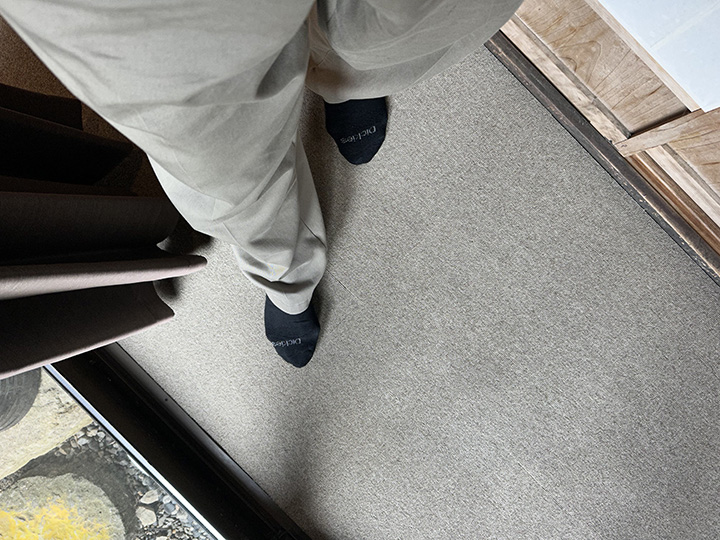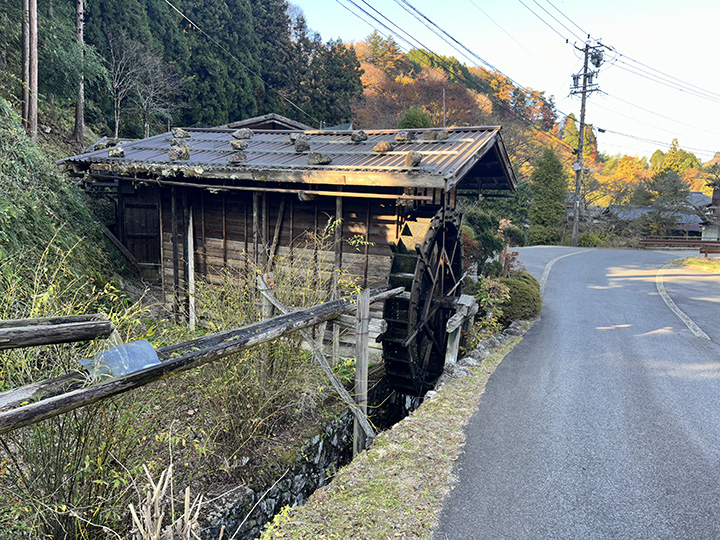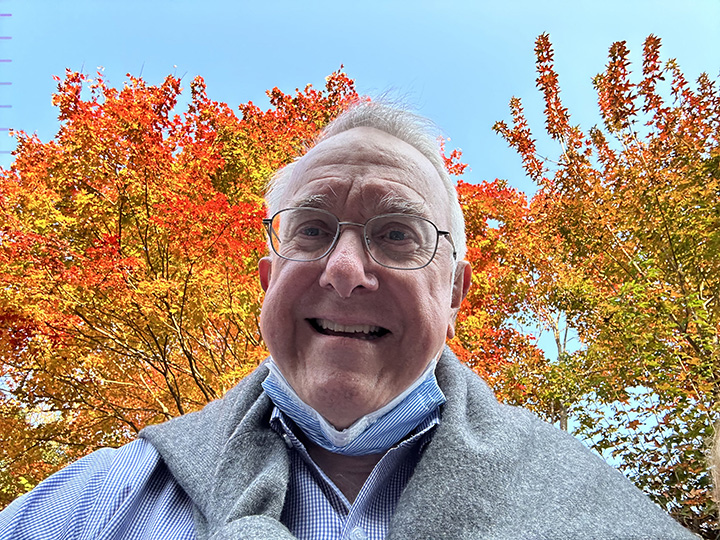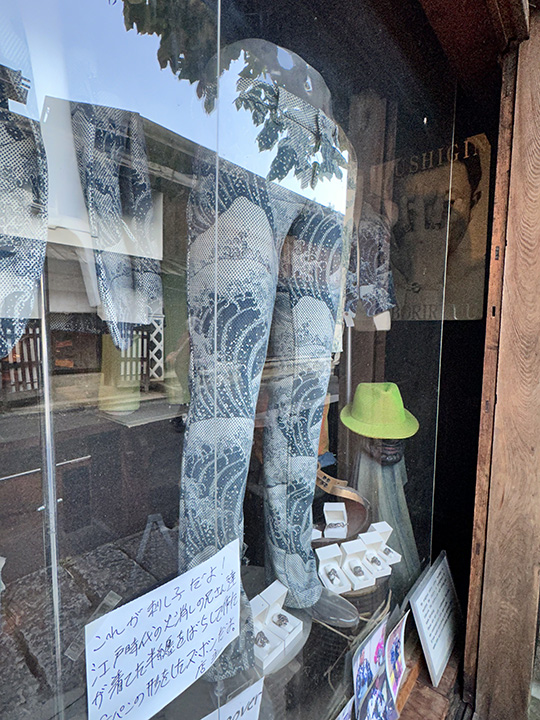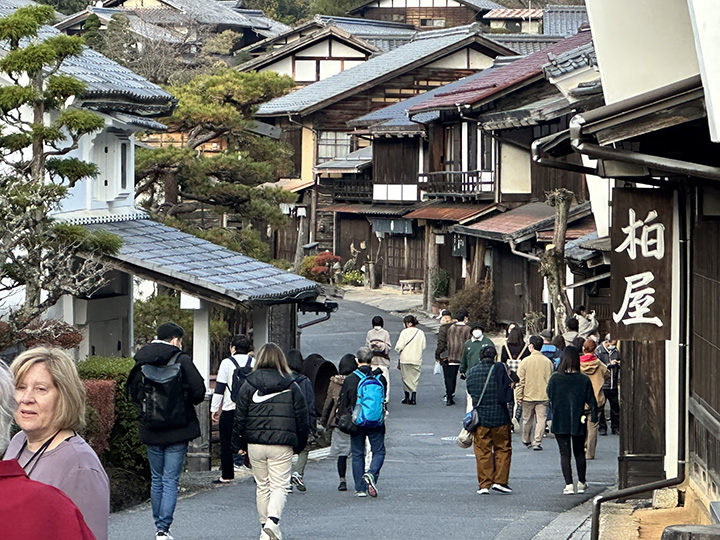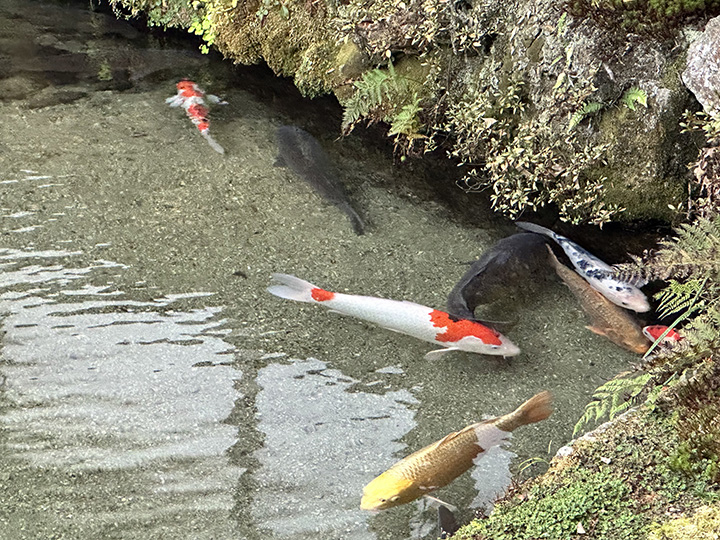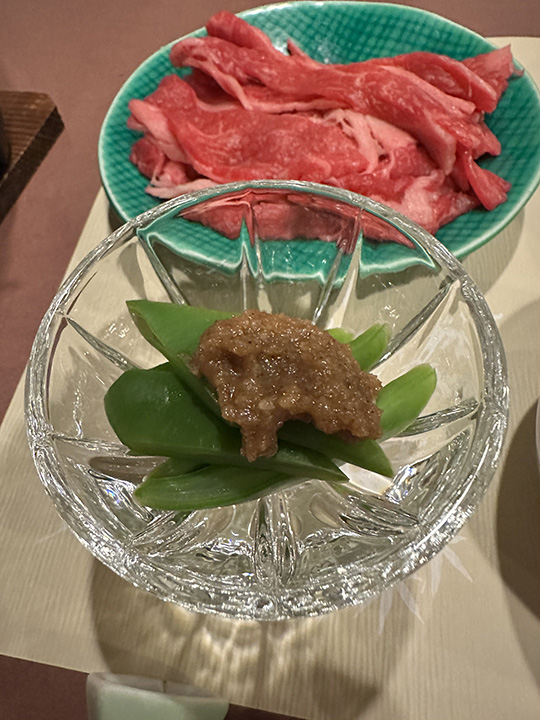|
Another great Road Scholar tour day. Lots of riding and walking.
And off we go to the train station.
Where we have reserved seats on a bullet train!
Shinkansen in Japanese means 'new trunk line' or 'new main line', but this word is used to describe both the railway lines the trains run on and the trains themselves. In English, the trains are also known as the bullet train. The term bullet train (dangan ressha) originates from 1939, and was the initial name given to the Shinkansen project in its earliest planning stages. They do look like bullets, don't they?
Our train is very comfy inside.
And the world outside really zooms along.
The farmland rushes by.
Even something as big as Mt. Fuji won't be around for long.
Kathleen says this will be our only chance to see Fuji on the trip, so we snapped pictures from the train as fast as we could. That one turned out OK, I think, all things considered.
I've found the view from a moving train often isn't very scenic.
Just houses lived in by people who wish they didn't live next to train tracks.
And endless fields.
Here's some video to show what it was like. Whenever we go through a tunnel, which is often, the interior of train shows up in the reflection.
We've arrived wherever it is we are. It became hard to keep track.
Get off one train.
Get on another.
And don't get lost.
We are headed to the small town of Ena where we will visit the Hiroshige Museum of Art which features exhibits on the Japanese art of woodblock printing.
The museum displays mainly the "Tanaka Collection" of Utagawa Hiroshige ukiyoe woodblock prints donated by ukiyoe woodblock collector the late Haruo Tanaka, in September of 2000.
The museum houses about 1,500 pieces of art focusing on ukiyoe, and hosts project exhibitions and special exhibitions throughout the year.
They are especially proud of their "Nakasendo Rokujukyu-tsugi Nouchi" (Tanaka collection), which includes the "Nakatsugawa in the Rain".
There is also a popular video corner on the 2nd floor Ukiyoe Navigation Room where we could try overprinting and learn about the process of making ukiyoe.
So let's get started making some woodblock prints...without, of course, any actual wood blocks, but the process is still the same.
See, what you do is you get a blue roller and roll it on the blue ink pad and then rub the blue plastic block with the raised art elements and then you carefully place the white paper just so and rub rub rub the back of the white paper with a pad and you get paper with the blue elements of a woodblock print.
Then you do the same thing with the red roller and now you've got two colors on your print.
And eventually you get something like this.
Or this. My colors didn't come out as bright and beautiful as they should have, but Vicki and Brian's work was gorgeous.
After practicing our art skills, we walked next door to a supermarket to buy lunch.
That Coke machine back there looks familiar, but have you ever heard of a Sriracha machine?
This was my lunch. When in Japan…
Now we are headed into the mountains.
Whatever it was I had for lunch, it wasn't a Big Mac.
In Japan they drive on the wrong side of the road.
But somehow they seem seldom to run into each other.
Kaori served us strawberry Kit Kats for a snack. They were delicious!
Road Scholar told me I should come in November because the leaves would be changing. Road Scholar was right.
Pretty colors all around.
Some of the Road Scholars are going to get off the bus and take a short hike along the Nakasendo Trail.
But not me. Sigh.
I hope this is my only disappointment of the trip. Most of the group got off the bus at this point for a one hour hike through the woods. But because there were going to be steep inclines, including lots of rocks to clamber over, I decided to play it safe and not risk falling again, injuring my knee, and ruining the rest of my trip. So I stayed on the bus and took a shorter hike. I think all I missed were a couple of small waterfalls though.
And this. Kaori did take some nice shots along the part of the hike I missed.
Like this one. I think it wins the prize for the trip. That's Vicki, I think. What a great photo, Kaori!
Meanwhile, the rest of us just took the last half of their hike.
Which gave us lots of color to admire.
Pretty, huh?
Don't you think?
We are headed to Tsumago, an old Japanese post town.
That ball hanging above the door indicates this is a sake brewery. When the sake starts to ferment they hang a ball made of green cypress boughs. When the bough turns brown, the sake is ready.
Along the way we stopped at a roadside inn that is run by friends of Kathleen.
If you want to go in, you have to take off your shoes.
But there are slippers if you need them. I could never fit my big feet in any of the slippers I was offered. My socks worked fine.
Kathleen says they remodeled this old inn and had it ready to go just in time for Covid to strike, which of course spoiled their plans. Kathleen was delighted to find they are beginning to receive visitors again.
There's a beautiful garden.
It's certainly a nice place.
Samurai swords (tachi) on display. They always carried one long sword and one short. The culture of carrying two swords started from the time the samurais were fighting duels on horseback. They used the longer tachi to hit the enemies off their horses, and use the shorter one to finish them.
Lovely.
Nice visit. Time to go.
There was a water-powered mill along the road. Probably made rice flour. Kathleen wasn't sure.
I have video of it turning, but I'm not going to bother posting it. You've seen a wheel turn before.
More pretty.
Still more.
This sign was at a fork in the road. I went the wrong way and Kathleen fussed at me. "Bill, when you come to a fork in the road, what do you do?" "Take it," I replied. Wrong answer.
We needed to go this way.
I thought it was sha na na.
Samurai Santa sake.
More pretty.
Linda and Judy are taking it all in.
Didn't I just take a picture of that pretty? <checks> Nope, this is new pretty.
The road is curvy so mirrors are provided to help drivers watch out for oncoming traffic. Bill thinks the convex reflection takes inches off his waist.
Another pretty, even though the sun seems to be going down.
Persimmons!
They look delicious.
But there has been no frost yet, so Bill isn't tempted.
Have you had enough pretty yet?
Maybe some man-made pretty will make a nice change of pace.
Aww. It's a ceramic critter.
Followed by more pretty.
It's getting rather overwhelming.
Everywhere you look.
The colors are screaming!
The trees are ablaze!
Bill considers making a run for it.
The sight of a little roadside shrine had a calming effect.
And we made it into town. This is Tsumago, a picturesque old post town and probably the most famous in Japan.
Linda admired a kimono.
While Bill tried to dream up an new way to take a picture of fall colors.
Well that's something different.
Maybe we can find a place to sit down.
Gotta be a bench around here somewhere.
No? C'mon, really?
Ah, a bench.
They take better care of their dogs than their pedestrians.
Like it's just the normal thing to do.
Well those are some mighty fancy pants.
This guy specializes in artsy clothing.
The Great Wave off Kanagawa is a woodblock print by Japanese ukiyo-e artist Hokusai, created in late 1831 during the Edo period of Japanese history. The print depicts three boats moving through a storm-tossed sea, with a large wave forming a spiral in the centre and Mount Fuji visible in the background.
And he wears fancy shoes, too. Geta are traditional Japanese footwear resembling flip-flops. A kind of sandal, geta have a flat wooden base elevated with up to three (though commonly two) "teeth", held on the foot with a fabric thong, which keeps the foot raised above the ground.
All we have to do now is wait for the hikers to return to us.
And so we wait.
But they finally do arrive and off we go to visit a local inn that has been here for a long, long time.
Honjin is the Japanese word for an inn for government officials, generally located in post stations (shukuba) during the later part of the Edo period. This is the (restored) Tsumago Post Town Honjin. The restoration of the Honjin had been the locals’ wish from the beginning of the Tsumago Post Town preservation project. The Honjin was eventually rebuilt in April 1995, based on a plan from the late Edo Period (1603-1867).
Of course we took off our shoes.
When we arrived the fire under the kettle had nearly gone out.
But the staff quickly took care of that.
Tsumago's Honjin was reconstructed in the 1990s, but great efforts have been taken so that it resembles its condition in the 1830s, when it served as the town's highest ranked inn.
It's like stepping back in time.
There are nice decorations.
And some not so nice. You wouldn't want to get skewered on one of those things. They look like some sort of Japanese pole arms. Were these the weapons we were told Japanese were being trained to use in self-defense when the Americans would invade in WWII? I have scoured the internet looking for anything that resembles these things, but I've come up empty. If you know what they're called, please let me know.
The honjin has a beautiful garden.
And fine decor.
And koi.
It's pretty, but I wouldn't want to live here, I think.
One of the tables was very old. It had been used when an important person visited in the 19th century.
He was so important that they wrote all about the visit on the bottom of the table top.
There's a fine garden that's designed to be viewed from exactly the right angle.
To get the right angle you have to be sitting on the floor looking through that special window.
Does this view look special to you? Me neither.
But overall the museum has done a fine job of recreating an Edo period rural inn.
Let's go find our bus.
This truly is persimmon country.
The rocks have washed down from the mountains.
Now we have arrived at our home for the next two nights. We're in Fukushima at the Kisojino-yado Iwaya ryokan.
Ryokans are traditional inns.
Which means you sleep on the floor.
The Road Scholars are wondering about sleeping on the floor. Kaori is explain how it works, and how it's so comfortable we'll just love the experience.
I'm exploring my room.
All the furniture is very ... short.
At least there are a couple of almost-normal chairs.
Here's a video tour.
Corey found a kimono in her closet. Judy hasn't taken the plunge yet.
Here's dinner.
Oh boy. Raw beef and something on some green beans. I think.
And an egg that we have been warned is not hard boiled. We're going to cook it ourselves.
That fish is mackerel. Mackerel was the only fish on the trip that Bill simply could not stomach. Even the raw fish was better.
The inn's proprietor welcomed us to her establishment while Kathleen translated. The inn has been in her family for generations and apparently there's some concern about who'll take over when she's gone.
You cook your own dinner in that hot pot.
If you want to do this at home, Amazon can help.
Poor Charley isn't a gourmand. He spent a lot of the trip looking for French fries.
Yes, Charley, they really did give you strips of raw beef.
Here's how it's supposed to work, I think. And give me a break. It's hard work shooting video with an iPhone in one hand while using chopsticks to cook with the other.
The Road Scholars have turned into great tabletop chefs.
Smiles all around. Mostly.
These three are enjoying the experience.
Kaori got a great picture of everything in the meal. Doesn't it all look wonderful? Except the mackerel?
|
















































